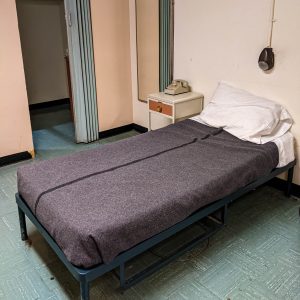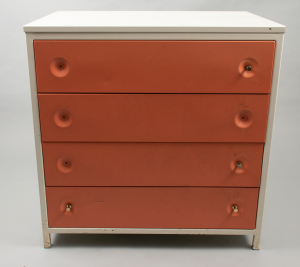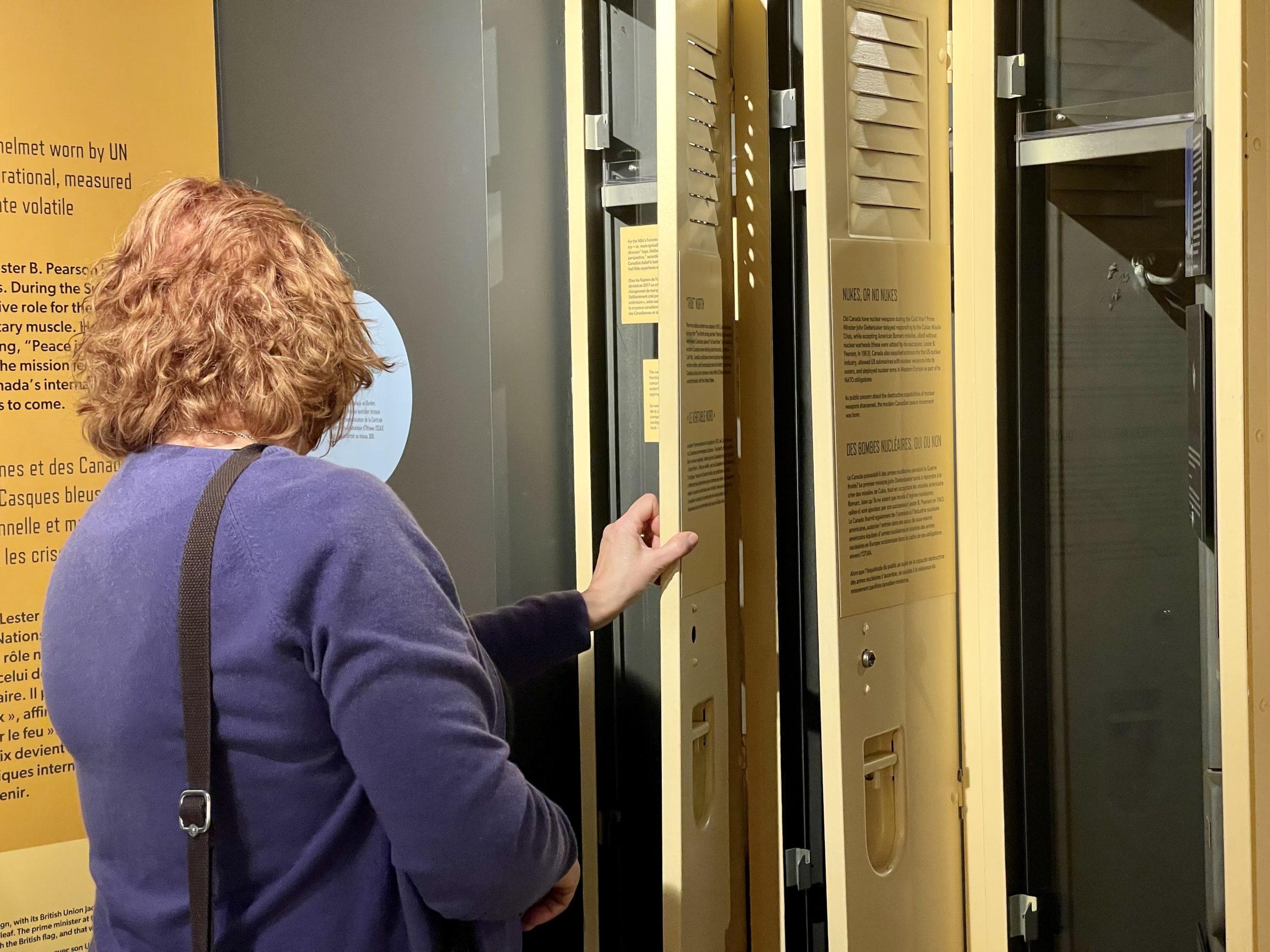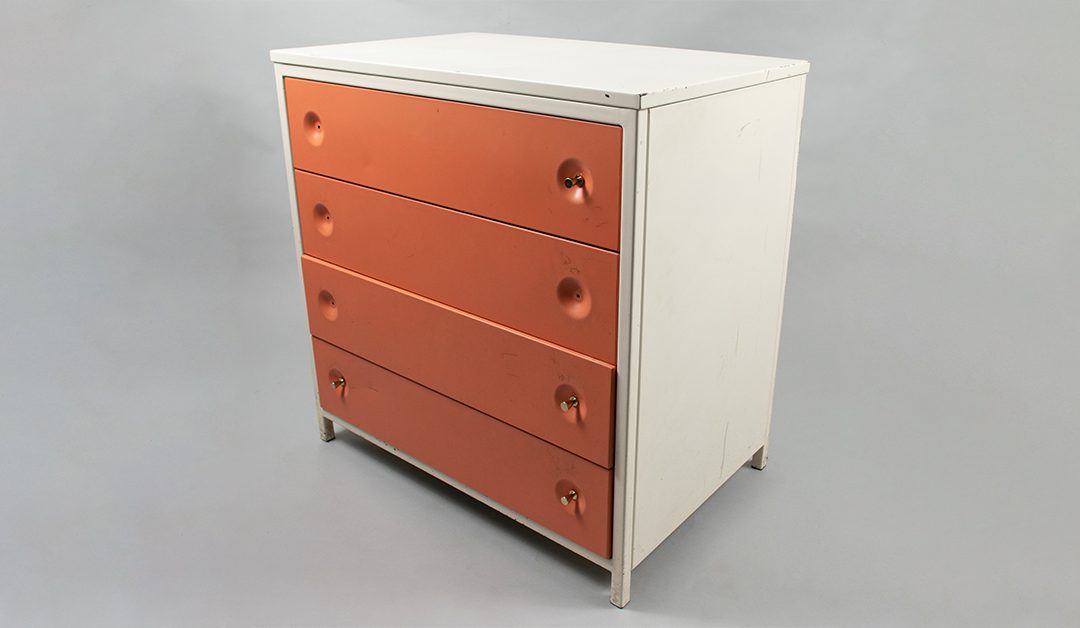(21/25)
As our 25th anniversary nears its end, we enter into the final stretch of our 25 artifact highlights! In celebration of this milestone year, we have been featuring never-before-seen artifacts from within the Diefenbunker’s collections. This week, we are featuring an original dresser from the Prime Minister’s suite.
 During the Diefenbunker’s operation as Canadian Forces Station (CFS) Carp from 1961 to 1994, it was fully equipped to house between 500 and 600 designated government officials, military personnel, and civilians, who would have been stationed in the bunker for a 30-day lockdown if a nuclear attack on Canada was detected during the Cold War. The type of sleeping quarters you had within the bunker was dependent on both your rank and seniority at the site. The Prime Minister and Governer General, as the head of state and representative of the monarch, were each given a suite inclusive of a secretary’s office, a personal office, and a private bedroom with a three-piece bathroom including a sink, shower, and toilet.
During the Diefenbunker’s operation as Canadian Forces Station (CFS) Carp from 1961 to 1994, it was fully equipped to house between 500 and 600 designated government officials, military personnel, and civilians, who would have been stationed in the bunker for a 30-day lockdown if a nuclear attack on Canada was detected during the Cold War. The type of sleeping quarters you had within the bunker was dependent on both your rank and seniority at the site. The Prime Minister and Governer General, as the head of state and representative of the monarch, were each given a suite inclusive of a secretary’s office, a personal office, and a private bedroom with a three-piece bathroom including a sink, shower, and toilet.
Those in senior ranks within the building — from ministers to commissioned officers — were given individual bedrooms on the 200 Level of the bunker, with communal washrooms and showers. When stationed onsite, lower ranks were assigned to shared dormitories on the 400, 300, and 100 Levels. Each dormitory contained bunk beds that could sleep up to nine personnel at a time. CFS Carp operated with a “hot bunking” system. This system involved three people rotating through a single bunk in a 24-hour period, each with an 8-hour shift. The first person would sleep in their assigned bunk, while the second worked their regular shift. The third individual would be on their recreation or food break in the Cafeteria or Mess Hall, awaiting their turn to sleep.

Dresser, Diefenbunker Museum: 1999.030.015
This dresser from the Diefenbunker’s collections was used in the Prime Minister’s suite. It is original to the site and would have been used by Prime Minister John Diefenbaker if he had to go underground to oversee Canada during a lockdown period. This dresser is rectangular in size, constructed of metal, and stands approximately 30 inches tall. It is white with four drawers painted orange, which each would have had a gold-coloured handle on either end. Currently, the dresser is missing four handles. The base drawer is the only one that is fully intact. The dresser was removed from the bunker after the site was decommissioned in 1994, however, the dresser was later returned in 1997 by volunteer Pierre Remillard, former CFS Carp personnel responsible for building operations, construction, and maintenance.
The dormitory spaces can still be viewed today. On your next visit underground, immerse yourself in our Canada and the Cold War exhibition that has been curated in former sleeping quarters on the 400 Level of the bunker. As you journey through Canada’s Cold War story, look for original hinges that would have affixed the bunk beds to the wall, lights that would have illuminated the bunks, and lockers that would have been used to store the belongings of personnel who were stationed at the Diefenbunker.

Stay tuned as we continue to celebrate our 25th anniversary by uncovering stories from our museum’s collections.
